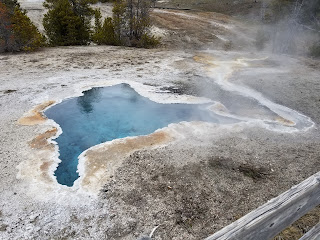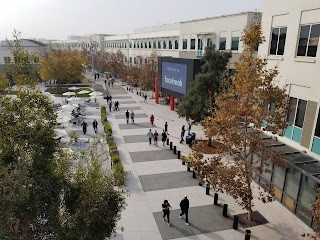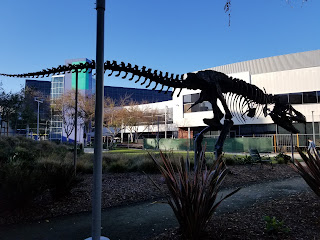My friends Joaquin, Kenandra, Luis, Phil, Steve, Tracy, and I played through the classic D&D adventure
The Keep on the Borderlands using
the 1981 D&D Basic
Rulebook. The Keep is a long adventure, and we got a
good look at early D&D and how it differs from modern versions like the current 5th edition.
Thanks to our Dungeon Master Steve for running this!

Here's the 1981 Basic Rulebook, by Gary Gygax, Dave Arneson, and editor Tom Moldvay. Erol Otus
drew the cover art and a few of the interior illustrations.


Although it's an early version, Basic already includes D&D trademarks like rolling 3d6 for your six attributes,
Magic Missile, owl bears, gelatinous cubes, and others. But the game is most interesting because some D&D
staples there are still weirdly unpolished.
For instance, dwarf, elf, and halfling are classes along with cleric or fighter, not races. So there's no such
thing as a dwarf fighter,
since those are mutually exclusive classes. Alignments are lawful, neutral, or chaotic, but good and evil aren't
alignments yet, and
the book notes that lawful is usually good and chaotic is usually evil. So, alignments can't yet describe a
chaotic good
Robin Hood or a lawful evil Sheriff of Nottingham.
Similarly, you seem to earn alarmingly little experience each game, until you realize that each gold piece worth
of
treasure you take also gives you an experience point. Basic has saving throws, but they're weirdly specific like
saves against “Poison or Death Ray.”
Combat is minimal compared to modern D&D. Typically you just move and attack, by rolling a d20 to hit and a d6
for damage,
or maybe use a spell or magic item. Characters don't have the big arsenal of class features that D&D 5e has,
or bonus actions or reactions to fill out your turn.
On the other hand, Basic does have an unusual structure around combat, the ten minute turn. A turn is the time to
do everything in
one dungeon room - enter, fight, heal, loot, etc. A turn has a lot going on - check for wandering monsters,
enter a room, roll the
distance to monsters, roll to see if each side is surprised, roll the monsters' reaction to seeing the party,
etc. But, we
didn't actually use turns in our games.
Of course, the verbal roleplaying component in Basic is the same as a modern game, and I think Basic would be
most
fun with gregarious players in a roleplaying-heavy adventure, like an investigation requiring a lot of social
interaction with the NPCs.
THE KEEP ON THE BORDERLANDS
The Keep on the Borderlands (1979) is an early adventure by Gary Gygax. The Keep was included
in D&D boxed sets and was "the most printed D&D module of all time."
The adventure has two main components, the eponymous Keep and the Caves of Chaos, which the adventure describes
as:
"...atop a sheer-walled mount of stone, looms the great KEEP. Here, at one of civilization's bulwarks between
good
lands and bad, you will base yourselves and equip for forays against the wicked monsters who lurk beyond.
Somewhere
nearby, amidst the dark forests an tangled fens, are the Caves of Chaos where fell creatures lie in
wait."
The Keep is essentially a small town, with an inn, tavern, temple, and shops including a provisioner and
trader, among other things. Besides getting rest and supplies, the party can also hear rumors there helping
guide
their forays outside. The Keep surprised me a little, because I didn't expect such an early module
to include a town that the party could nonlinearly explore and revisit at will.
I won't give away too much about the Caves, except that their unlikely assembly of angry monsters is classic
retro dungeon crawl,
punctuated with some alarming surprises. Besides the Caves themselves, the wilderness around the Keep also
includes a
few small challenges to get the party warmed up.
Gygax explicitly leaves many details to the Dungeon Master, presenting the Keep as a starting point for the DM's
own worldbuilding,
and our DM Steve added a lot of his own elements to the story. For example, the book doesn't name NPCs or their
shops, but we
soon met Jovann at the Leaping Wolf Inn, Emodius the provisioner at the Wandering Spirit, and others. Gygax
didn't include a magic shop,
but we soon met Bernard Theobold at the Cackling Kettle. Bernard couldn't supply us with potions without "moon
rocks" from the Caves,
so we soon cleared some of the caves and installed our own miners there. Steve also added competing parties
working
out of the Keep, and a board at the tavern for betting on the parties' survival, which we used to bootstrap our
bank accounts by betting on ourselves.
We played the adventure out of Goodman Games's recent "Into the Borderlands" book, which includes reprints of the
original
adventure, a 5e conversion, and essays by Mike Mearls and others.

The Keep on the Borderlands is also available on DriveThruRPG, and their page includes some
interesting history of the adventure by Shannon Appelcline.






























































